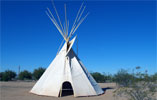 Teacher Guide to Native Americans
Teacher Guide to Native Americans
The history of Native Americans is as old as the continent of North America. The only real indigenous peoples of North America are the Native Indians. This review will not touch upon a very sensitive subject concerning the treatment of the Native Americans by the groups of white men but it is important to realize what happened to the Native American people.
European Settlers
It is hard to accurately document the total number of tribes that were present in North America when the first European settlers made the trip across the Atlantic Ocean. The record-keeping software was, nonexistent! A good estimate would be well over 300 unique and individual tribal groups. In the year 2008 there are more than 4 million Native American individuals both in the Continental United States and Canada. All of these Native Americans can trace their history back to their respective Indian tribes from both of these countries. Some of the more popular tribes and some that you may have even heard of include the Arapahoe, Navajo, Cherokee, Sioux and Seminole.
- Background Sites
- Bulletin Board Pictures
- Native American Lesson Plans
- Native American Worksheets
- Ultimate Thanksgiving Set
Great Plains Buffalo - The Native Americans of North America utilized their natural resources in a manner that has never been duplicated on the North American continent. For example, the Great Plains Buffalo that once numbered over 10 million was so beloved and every single part of that animal was used in one way or another. To say that nothing went to waste would be a vast understatement. The Native American Indians deeply respected this animal for not only it's meat but also as a spiritual being that was revered by all the tribes that came in contact with this wonderful animal. It was the white man's greed for the furs or pelts that almost made Great Plains Buffaloes an extinct species. What the Native Americans had created with their 100% utilization of the buffalo from snout to tail was almost completely destroyed by the arrival of rifle sharpshooting hunters.
Expansion - The history of Native Americans can be looked at as an experiment in both expansion and lack of understanding from the European settlers. It is hard to understand what was going on in the minds of the American settlers especially the ones migrating from the original 13 Eastern Colonies westward all the way to California. The truth is that no one who is alive today was alive during the battle with the Indians and the resulting forced reservation living accommodations for these original indigenous Native Americans. What we do know is that the entire continent that Americans call home was once all Native American Indians.
Respectful People - To say that the Native American Indians were mistreated is a fair statement and one that can be expanded upon with open discussion and relevant factual information. The Native American Indians acted as any other population of people would have done when their beloved land and food sources as well as natural resources were being taken from them. They fought and fought well. The pride of the Native American Indian for family, tribe and earth is spectacular and inspiring. Many lives on both sides were lost during the expansion tactics of the United States original settlers until peace eventually came through Geronimo's ultimate surrender.
Divide and Conquer - The history of Native Americans can be summed up in three simple words, divide and conquer. If every single Native American warrior from every North American tribe would have joined forces during the first conflict with the European settlers, quite possibly America and Canada would be quite different locations. As it stands the Native Americans now have very important rights that are only superseded by certain United States and Canadian Federal laws. If given the choice between being free or living on reservations the Native American Indians would have certainly selected choice number one.
Wado - One thing each and every American and Canadian can say to the surviving Indian tribal populations is wado which means thank you in the Cherokee native tongue. Please see below only a handful of the Native American Indian tribal names so that you may become familiar with some of the people's that once roamed free in this great land that is now the United States of America and Canada.
Abenakis - Native New Englanders
Alabamas - Alabama
Algonquins - Ontario/Quebec area of Canada.
Apaches Relatives of the Navajos, the Apache Indians are best-known for their fierce military resistance against the Mexicans and Americans, under the leadership of warriors like Geronimo and Cochise.
Apalachees Original people of northern Florida, the Apalachee Indians were driven west and their descendants live in Louisiana today.
Arapahos the Arapaho Indians were originally farming people, but once horses were introduced to the Americas, they began to follow the buffalo herds like the Cheyenne and Sioux.
Related Teacher Resources That Are Worth A Look:
- Comparing Tribes VENN Diagram
- Create Your Own Native American Board Game
- Native American Conquest
- Native Americans, Pilgrims, and Me
- Native Americans Facts for Kids
- The Wampum Chronicles